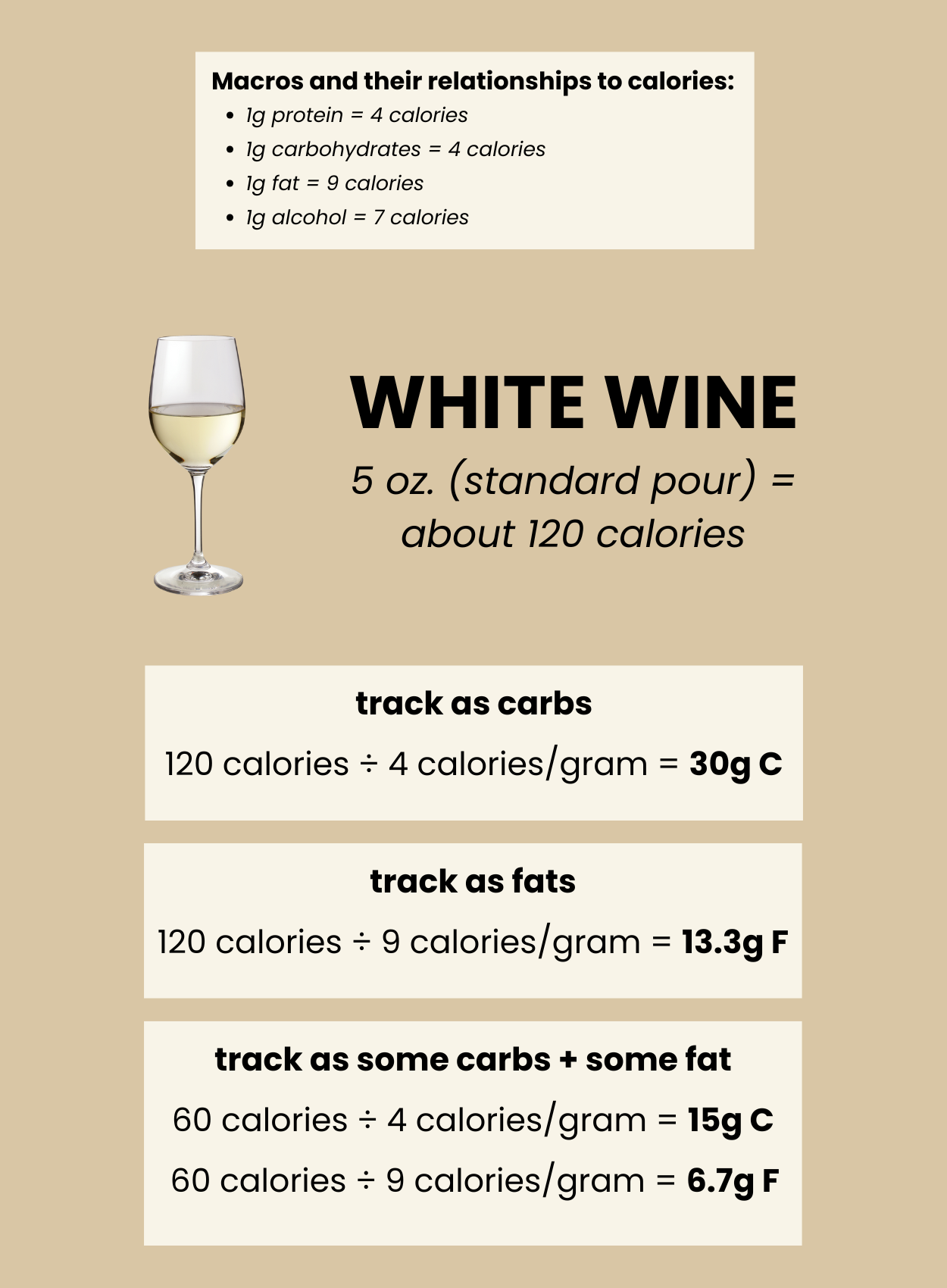ALCOHOL + YOUR MACROS
Let’s face it: life’s celebrations, meals out, and sometimes winding down at home often come with a drink in hand. (There is a lot of new research out about the effects of alcohol – this post is not about whether or not consuming alcohol is the right choice for you; this post is about what alcohol looks like in regards to macros if/when you are choosing to imbibe.)
When it comes to tracking macros and managing nutrition goals, alcohol can be a tricky factor. While it doesn’t contain any essential nutrients, it still has calories — and those calories count when you’re working toward a health or fitness goal. So, how does alcohol affect your macros, and how can you track it without sabotaging your efforts?
HOW ALCOHOL AFFECTS YOUR MACROS
First, it’s helpful to break down what alcohol is, from a nutritional perspective. Alcohol is metabolized by your body differently than the macronutrients you’re familiar with, like protein, fats, and carbs. In fact, alcohol is considered a "fourth macronutrient" and provides about 7 calories per gram (compared to 4 calories per gram of carbs and protein, and 9 calories per gram of fat). This means that alcohol can add a significant amount of calories to your daily intake, even if it doesn’t directly contribute to your protein, carb, or fat needs.
But here’s the kicker: those 7 calories per gram of alcohol don’t contribute to muscle building, energy, or essential body functions. Your body views alcohol as a toxin, so it prioritizes metabolizing it over processing other nutrients. This means when you drink, your body halts the burning of fat and carbs temporarily, focusing on processing alcohol first.
So, what does this mean for tracking alcohol? Essentially, you’re adding empty calories to your intake. The goal here is not to avoid alcohol entirely (unless it’s best for your personal goals and/or values), but rather to understand how it fits into your daily intake and to make informed choices.
TRACKING ALCOHOL AND ITS MACROS
Now that we know alcohol affects your macros and provides empty calories, how do you track it? The first step is understanding how much alcohol you're drinking. If you're having a cocktail, beer, or wine, it’s important to account for both the alcohol content and the mixers or ingredients used. Most food tracking apps allow you to search for common alcoholic beverages, and they will break down the calories based on the serving size. However, because many entries are entered as purely alcohol, and not protein, carbs, or fats, it’s important to understand how to track it as such.
Here’s an example of how you might track a glass of white wine:
For a favorite or go-to beverage, I recommend saving that drink as it’s own entry in your tracking app (or at least making a note of it in your phone) for ease of entry. Here’s a video of how you would do this using Cronometer, so that you don’t have to stop and do calculations every time you order that drink. Like small licks, bites, and tastes of food, even a drink or two that is unaccounted for can add hundreds of calories to your day. If this is done frequently, it could be impacting your progress in ways you don’t realize!
SO THEN…WHAT SHOULD I DRINK?!
Some tips to how to make a drink more macro-friendly:
MAKE IT SPARKLING | add a splash of soda water or sparkling water to your drink as your mixer (these are zero calories, unlike tonic water that has added sugar). Same goes for subbing a regular soda with diet.
SKIP THE MIXER ALTOGETHER | not for everyone, but having a shot or two instead of higher-calorie cocktails can save a lot (typically hundreds) of calories over the course of an afternoon or evening.
CONSIDER A LIGHTER OPTION | this might be light beer over craft beer, a seltzer instead of a cocktail, or a glass of champagne.
SPRINKLE IN SOME WATER | alternating a glass of water between drinks is a great strategy to not only stay hydrated, but also to help account for how much you are consuming.
Kind of like the practice of tracking macros, tracking alcohol doesn’t have to be difficult, but it does require a little mindfulness. By knowing the calorie and macro content of the drinks you choose, you can make adjustments based on your nutrition goals. If you’re tracking macros closely, consider light beer or dry wine, or opt for spirits with low-calorie mixers to keep things in check.
Moderation is key, and it’s okay to enjoy a drink here and there. The goal is to strike a balance between your lifestyle and your nutritional goals without feeling restricted. So, the next time you're planning a drink, just keep these tips in mind and make the choice that fits best for you.

